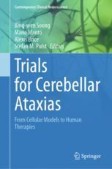Search
Search Results
-
Anoikis resistance and immune escape mediated by Epstein-Barr virus-encoded latent membrane protein 1-induced stabilization of PGC-1α promotes invasion and metastasis of nasopharyngeal carcinoma
BackgroundEpstein-Barr virus (EBV) is the first discovered human tumor virus that is associated with a variety of malignancies of both lymphoid and...

-
Intranasal Delivery of Mitochondria Attenuates Brain Injury by AMPK and SIRT1/PGC-1α Pathways in a Murine Model of Photothrombotic Stroke
Ischemic stroke is one of the major causes of morbidity and mortality worldwide. Mitochondria play a vital role in the pathological processes of...

-
Bisphenol-A Mediated Impaired DRP1-GFER Axis and Cognition Restored by PGC-1α Upregulation Through Nicotinamide in the Rat Brain Hippocampus
The regulatory network of mitochondrial biogenesis and dynamics is vital for mitochondrial functions and cellular homeostasis. Any impairment in the...

-
Liraglutide Regulates Mitochondrial Quality Control System Through PGC-1α in a Mouse Model of Parkinson’s Disease
Parkinson’s disease (PD) is a multifactorial disorder, and there is strong evidence that mitochondria play an essential role in the disorder. Factors...

-
Flavonoids modulate AMPK/PGC-1α and interconnected pathways toward potential neuroprotective activities
As progressive, chronic, incurable and common reasons for disability and death, neurodegenerative diseases (NDDs) are significant threats to human...

-
Unlocking new avenues for neuropsychiatric disease therapy: the emerging potential of Peroxisome proliferator-activated receptors as promising therapeutic targets
RationalePeroxisome proliferator-activated receptors (PPARs) are transcription factors that regulate various physiological processes such as...

-
MAR1 suppresses inflammatory response in LPS-induced RAW 264.7 macrophages and human primary peripheral blood mononuclear cells via the SIRT1/PGC-1α/PPAR-γ pathway
BackgroundSepsis is a complex syndrome characterized by a dysregulated inflammatory response to systemic infection and leads to shock, multiple organ...

-
Tetramethylpyrazine Nitrone Promotes the Clearance of Alpha-Synuclein via Nrf2-Mediated Ubiquitin–Proteasome System Activation
Aggregation of α-synuclein (α-syn) and α-syn cytotoxicity are hallmarks of sporadic and familial Parkinson’s disease (PD). Nuclear factor...

-
Songorine ameliorates LPS-induced sepsis cardiomyopathy by Wnt/β-catenin signaling pathway–mediated mitochondrial biosynthesis
Septic cardiomyopathy (SCM) is manifested by impairment of cardiac contractile function with myocardial mitochondrial dysregulation. Natural product,...

-
Overexpression of Peroxisome Proliferator-Activated Receptor γ Coactivator 1-α Protects Cardiomyocytes from Lipopolysaccharide-Induced Mitochondrial Damage and Apoptosis
Mitochondrial damage is considered one of the main pathogenetic mechanisms in septic cardiomyopathy. Peroxisome proliferator-activated receptor γ...

-
NAD+ improves cognitive function and reduces neuroinflammation by ameliorating mitochondrial damage and decreasing ROS production in chronic cerebral hypoperfusion models through Sirt1/PGC-1α pathway
BackgroundMicroglial-mediated neuroinflammation plays an important role in vascular dementia, and modulating neuroinflammation has emerged as a...

-
Cell-Based Assays to Identify ERR and ERR/PGC Modulators
The estrogen-related receptor alpha (ERRα, NR3B1) is an orphan nuclear receptor which plays a role in endocrine disruption, energy homeostasis, and...
-
CTRP3 Activates the AMPK/SIRT1-PGC-1α Pathway to Protect Mitochondrial Biogenesis and Functions in Cerebral Ischemic Stroke
C1q/tumor necrosis factor-related protein-3 (CTRP3) had shown its angiogenesis and enhancement of mitochondrial biogenesis properties in the...

-
Regulation and targeting of SREBP-1 in hepatocellular carcinoma
Hepatocellular carcinoma (HCC) is an increasing burden on global public health and is associated with enhanced lipogenesis, fatty acid uptake, and...

-
The role of hypoxia-inducible factor 1α in hepatic lipid metabolism
AbstractChronic liver disease is a major public health problem with a high and increasing prevalence worldwide. In the progression of chronic liver...

-
Shen Qi Li **n formula improves chronic heart failure through balancing mitochondrial fission and fusion via upregulation of PGC-1α
BackgroundOur previous study proved that Shen Qi Li **n formula (SQLXF) improved the heart function of chronic heart failure (CHF) patients, while...

-
Spinocerebellar Ataxia Type 7: From Mechanistic Pathways to Therapeutic Opportunities
Spinocerebellar ataxiaSpinocerebellar ataxia (SCA) type 7 (SCA7) is a cerebellar and retinal neurodegenerative diseaseNeurodegenerative diseases...
-
Tannic Acid Provides Neuroprotective Effects Against Traumatic Brain Injury Through the PGC-1α/Nrf2/HO-1 Pathway
The present research was conducted to elucidate a possible molecular mechanism related to neuromodulatory effects of tannic acid (TA) supplementation...

-
rhEPO Upregulates the PPARγ Pathway in Long-term Cultured Primary Nerve Cells via PI3K/Akt to Delay Cell Senescence
Previous studies have confirmed that both recombinant human erythropoietin (rhEPO) and peroxisome proliferator-activated receptors γ (PPARγ)...

-
Rational Design, Synthesis, and In Vitro Neuroprotective Evaluation of Novel Glitazones for PGC-1α Activation via PPAR-γ: a New Therapeutic Strategy for Neurodegenerative Disorders
In the present study, two structurally diverse novel glitazones were designed and synthesized for activation of central PGC-1α signaling through...

